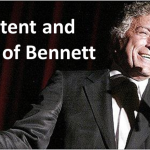Content marketing is entering its adolescence.
The needs of the market have matured quickly. It is no longer enough to build a content strategy based on search optimization and keyword research. Content discovery is still important. But we’ve entered into a new phase where the content experience determines our success.
Most content marketers have figured out the conversation has changed on the Web. To engage the audience in that conversation we must deliver content that is helpful, useful or entertaining. Or all of these.
How do we get better at understanding our audience and creating content that speaks to them?
That’s our growing pain right now. And that is the topic in the spotlight.
Spotlight: How to engage your audience with content marketing
6 careless mistakes that lead to inaccurate buyer personas via Hubspot
You probably have a picture in your mind of who your ideal customer is. But how accurate is it? One of the pitfalls of creating buyer personas is to rely on assumptions that can lead your content marketing down the wrong rabbit hole.
One example is anecdotal evidence.
The easiest path to understanding buyers is to talk to your customer-facing team members. But it’s not a good idea to base your content marketing strategy on this data alone writes Joe Lazauskas. There are two limitations to this approach.
First, your existing customers are not always the best example of who would buy from you today. Second, your current customers’ pain points are different than those of someone who has never worked with you. You need additional insight to woo new customers with content marketing.
Find out five other buyer persona assumptions you need to avoid here.
Is your content strategy guided by audience intent – or just keywords? via Moz
Still basing your content strategy on keywords? News flash: content marketing today is much more than keyword optimized Web pages. The problem with old-school SEO-driven strategy is it does not build a relationship with the audience Laura Lippay writes over at Moz.
Content that speaks to audience intent does.
The key to understanding intent is learning what the audience considers useful, interesting, unique and share-worthy. Content that performs well also makes them look useful, interesting and unique when they share it. Sharing is a reflection of their lifestyle values. When your content speaks to them on that level, you build a relationship with them.
How do you align audience intent with your business objectives?
Well, there’s nothing like a real world example to help you connect the dots. Laura has one for you here.
How to write compelling copy when you don’t have an audience via ConversionXL
How do you speak to your target audience when you have little-to-no information about them? Jennifer Havice offers a savvy solution in this post from ConversionXL. She outlines a nifty process for mining testimonials and reviews to find the right words and phrases to put in front of your audience.
I love this because it’s sneaky brilliant.
When you don’t have customer data, the next best thing is to look at other people’s customers. Jennifer gives you step-by-step tips on how to find them on Amazon, social media and other review sites. Then she shows you how to identify the key words they use to express their desires, concerns or pain points.
Starting to see the possibilities? With this “inside information” you can frame your message to match how the target audience thinks about its goal.
This one is a must read for copywriters and content marketers. Check it out here.
Best of the Web: Blogger highlights
Social Media Marketing
The answer to the organic reach vs advertising problem on social media channels via Social Media Explorer
3 can’t-miss tips for optimizing social media content via Crazy Egg
Scientific guide to writing great tweets: How to get more clicks, retweets and reach via Buffer
8 brain triggers guaranteed to boost your social media marketing via Marketing Land
Why ad agencies aren’t adjusting to a real-time social media world via Businesses Grow
Content Marketing
Say hello to the content marketing stack via Marketing Land
Blogging didn’t save my business. Neither did content marketing via The Sales Lion
Copywriting is dead; long live copywriting! via Branded3
Why you should create long-form content (and how to do it) via KISSmetrics
Syndicated content: why, when & how via Search Engine Land
Content marketing: The 4 most critical components to measure & analyze via Search Engine Watch
Readability rules for blogging like an A-lister via GO Digital
Response Marketing
The 5 other landing pages your business needs via Social Media Hat
The emotional journey: Moving customers toward the sale via Crazy Egg
Size matters: The long and short of conversion marketing via Unbounce
A 5-step framework for conversion rate optimization via Moz
The tease factor: How to optimize your email marketing for engagement via Email Monday
Agile creative: the future of email? via Econsultancy
Branding
Creativity unbound: How current digital publishing spotlights brands via Marketing Land
The top 5 threats to online branding via Marketing Profs
Making hard choices for native’s survival via Adweek
Integrated Marketing
Multimedia content strategy: Considering different formats and sizes via Econsultancy
Multimedia content strategy: Integrating your content platforms via Econsultancy
Visual Marketing
4 ways visual design can improve your social media marketing via Social Media Examiner
How to create and promote explainer videos via Social Media Examiner
How to create videos that produce ROI via Econsultancy
Will social video be the next big thing? via Social Media Explorer
Newswire
Digital Marketing Weekly via JGO Digital
Digital marketing news of the week: Facebook upgrades video metrics for tracking viewer retention; Snapchat settles FTC claim over privacy breaches; Publicis and Omnicom kill merger plans; More










![Make your story stand out in the expanding universe of social media [Infographic]](https://digitalheartmarketing.com/wp-content/uploads/2013/12/social-media-universe-150x150.png)


Speak Your Mind